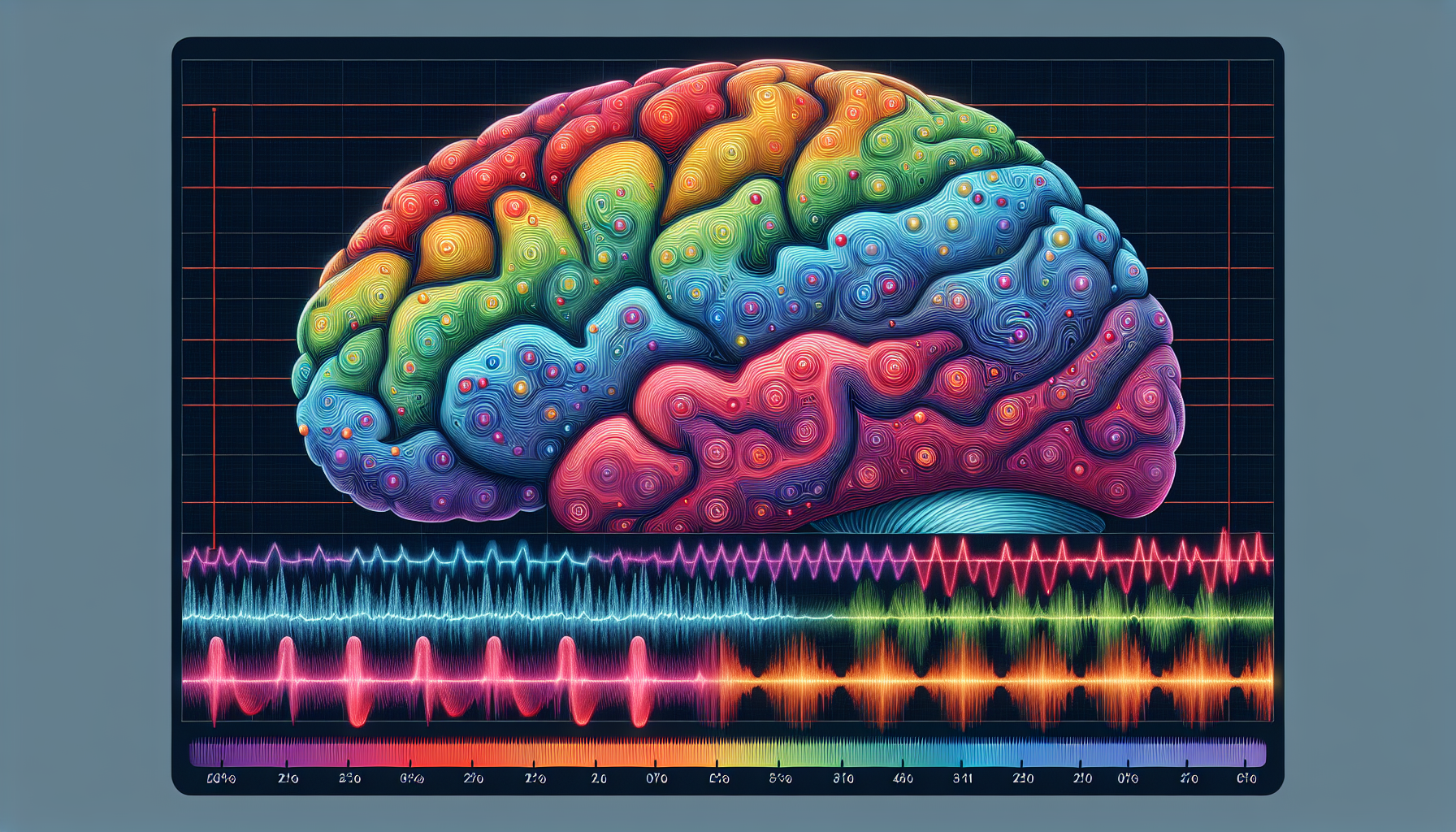In the pursuit of mental wellness, the exploration of how our brain functions and how it can be optimized is a never-ending journey. One of the most fascinating areas of this exploration is brainwave entrainment, a practice that involves stimulating the brain to enter specific states of consciousness. This technique has shown promising results in improving a variety of mental health issues, from stress and anxiety to cognitive function and focus. Let’s delve into this technique, understand its benefits, and consider how it can be integrated into our daily routines for better mental health.
Brainwave entrainment works by exposing the brain to stimuli – typically sound or light – at a certain frequency, encouraging the brain’s electrical charges to align with that frequency. This process is similar to how we might find ourselves tapping our feet to the beat of a song. When the brain’s frequencies are guided into a certain pattern, it can induce states of relaxation, focus, or energy, depending on the frequency used.
Understanding Brainwaves and Their Significance
Before we explore the technique itself, it’s important to understand what brainwaves are. Brainwaves are rhythmic electrical impulses produced by the brain’s neurons communicating with each other. They vary in frequency and are associated with different states of consciousness. For example, delta waves are associated with deep sleep, while beta waves are linked with active, alert states.
The Five Categories of Brainwaves:
- Delta (0.5-4 Hz): Deep sleep.
- Theta (4-8 Hz): REM sleep, meditation, and creativity.
- Alpha (8-14 Hz): Relaxed but alert states.
- Beta (14-30 Hz): Active, focused, thinking, or anxious states.
- Gamma (30-100 Hz): Insight and high-level information processing.
The Process of Brainwave Entrainment
Brainwave entrainment can be achieved using various methods, including:
- Binaural Beats: This involves listening to two different tones, one in each ear, which the brain perceives as a single, new tone.
- Isochronic Tones: These are single tones that turn on and off rapidly, and are said to be more effective than binaural beats as they don’t require headphones.
- Monaural Beats: These are similar to isochronic tones but the pulse speed is slower, and they can be listened to without headphones.
- Photobiomodulation: This uses visual stimuli to induce entrainment, often through a strobe light or flashing screen.
Benefits of Brainwave Entrainment
Brainwave entrainment has a wide range of potential benefits for mental health, including:
- Stress Reduction: By entraining the brain to alpha or theta frequencies, individuals can experience a more relaxed state, reducing stress.
- Improved Sleep: Delta wave entrainment can help individuals who struggle with sleep by promoting the deep, restorative stages of sleep.
- Enhanced Focus and Concentration: Beta wave entrainment can help improve focus and concentration, particularly useful for tasks requiring sustained attention.
- Mood Regulation: Certain frequencies can help regulate the neurotransmitters involved in mood, which may be beneficial for those with mood disorders.
- Cognitive Enhancement: Some studies suggest that gamma wave entrainment can enhance cognitive functions, including memory and processing speed.
For those interested in a deeper understanding of mental wellness, particularly how it relates to cognitive function, consider reading about Cognitive Function and Nutritional Supplementation, which explores the role of diet in brain health.
Integrating Brainwave Entrainment into Daily Life
Here are some practical ways to incorporate brainwave entrainment into your routine:
- Meditation: Combining brainwave entrainment with meditation can heighten the relaxation and mindfulness effects.
- Work and Study Sessions: Using beta wave entrainment can help maintain focus during work or study.
- Before Bed: Delta or theta entrainment can be part of a bedtime routine to improve sleep quality.
- During Exercise: Alpha entrainment can be used to create a relaxed but alert state, ideal for yoga or gentle exercise.
When discussing the overall health of the brain, it’s also important to consider lifestyle factors that contribute to its well-being. Articles like Managing Stress for a Healthier Brain and Promoting Brain Health Across the Lifespan provide valuable insights into maintaining a healthy brain through various stages of life.
Precautions and Considerations
While brainwave entrainment is generally considered safe, it’s not suitable for everyone. Individuals with epilepsy or those who are prone to seizures should avoid this technique due to the risk of inducing a seizure, particularly when using photobiomodulation. It’s also advised to start with shorter sessions and gradually increase the duration to prevent any potential discomfort.
External Resources for Further Reading
- An in-depth study on the effects of brainwave entrainment on anxiety and stress.
- A research article exploring the impact of gamma brainwave entrainment on cognitive functions.
- An overview of the theoretical aspects of brainwave entrainment.
Conclusion
Brainwave entrainment is a fascinating and accessible tool that holds potential benefits for our mental health. By understanding and utilizing the different frequencies of brainwaves, we can target specific mental states and work towards improved well-being. As with any wellness practice, it is essential to consider individual needs and consult with healthcare professionals when necessary.
To learn more about how to maintain a healthy brain, it’s worth exploring Integrative Approaches to Brain Health and Pain Management, which offers insights into holistic methods for managing pain and promoting brain health.
Remember, the journey to mental wellness is personal and multifaceted, encompassing not just techniques like brainwave entrainment but also lifestyle choices, nutrition, and social factors. By staying informed and proactive, we can all take meaningful steps toward achieving a more balanced and healthy state of mind.



